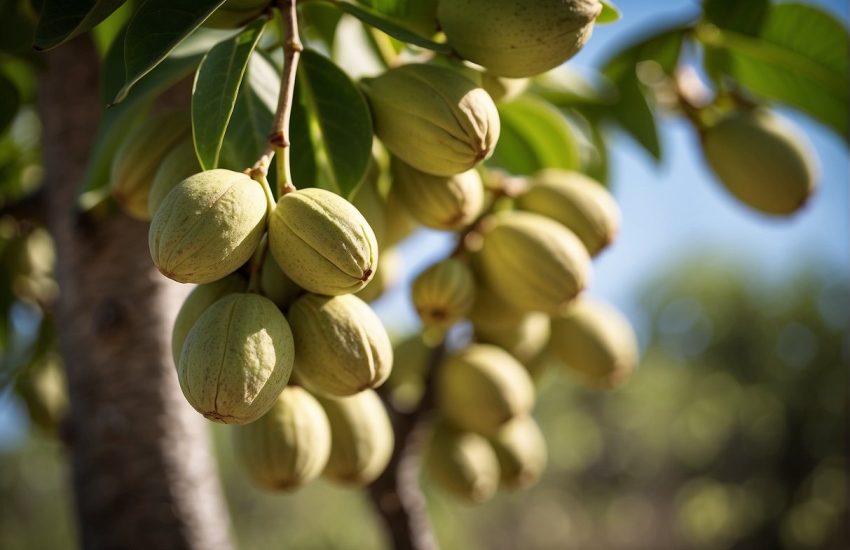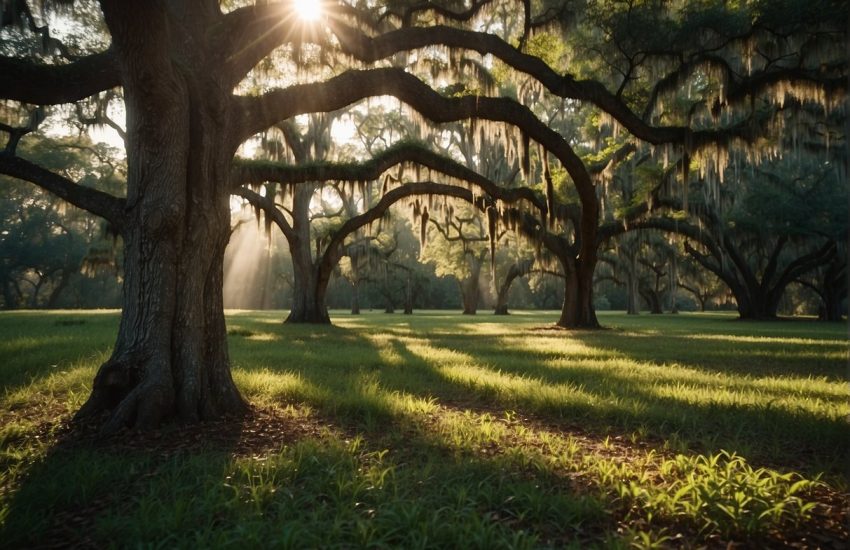Palm Trees in Virginia: Facts and Tips for Growing and Maintaining Them
Palm trees are often associated with tropical locations, but did you know that some species can actually thrive in Virginia’s climate? While palm trees may not be native to the area, they can still add a unique and exotic touch to landscaping and gardens.

One type of palm tree that can grow in Virginia is the Sabal minor, also known as the dwarf palmetto. This palm tree is native to the southeastern United States and can tolerate cold temperatures down to around 0°F. It is a slow-growing palm that can reach heights of up to six feet and has a fan-like appearance.
Another palm tree that can grow in Virginia is the Windmill Palm, or Trachycarpus fortunei. This palm tree is native to China and can tolerate temperatures down to around 5°F. It can grow up to 40 feet tall and has a distinctive hairy trunk. While it may take several years for the Windmill Palm to reach its full height, it can still add a unique and exotic touch to Virginia’s landscape.
Climate and Hardiness Zones in Virginia

Virginia’s Diverse Climate
Virginia’s climate is diverse and varies depending on the region. The state experiences four distinct seasons, with hot summers and cold winters. The average temperature in Virginia during the summer is around 80°F, while in winter, it drops to around 40°F.
In the western region of Virginia, the climate is generally cooler due to the higher elevation. This area experiences more significant temperature variations between the seasons. The eastern region of Virginia has a more moderate climate, with milder winters and hot summers.
Understanding USDA Hardiness Zones
The United States Department of Agriculture (USDA) has divided the country into 13 hardiness zones based on the average minimum temperature. These zones help gardeners and farmers determine which plants will thrive in their area.
Virginia falls into USDA Hardiness Zones 6 and 7, which means that the state experiences cold winters with average minimum temperatures ranging from -10°F to 10°F. This can limit the types of plants that can survive in the area, as they must be able to withstand these colder temperatures.
It is essential to consider the hardiness zone before selecting plants for your garden or farm. Choosing plants that are not suited for the zone can lead to poor growth and even death. By selecting plants that are hardy to the zone, you can ensure a successful and thriving garden or farm in Virginia.
Popular Palm Trees Suited for Virginia

When it comes to palm trees, Virginia may not be the first state that comes to mind. However, there are several cold-hardy palm trees that can thrive in Virginia’s climate. Here are three popular choices for those looking to add a touch of the tropics to their Virginia landscape.
Windmill Palm (Trachycarpus Fortunei)
The Windmill Palm, also known as Trachycarpus Fortunei, is a slow-growing and cold-hardy palm tree that can adapt well to Virginia’s climate. This palm tree is native to China and can grow up to 30 feet tall. The Windmill Palm is known for its unique fan-shaped leaves that can withstand cold temperatures.
Needle Palm (Rhapidophyllum Hystrix)
The Needle Palm, or Rhapidophyllum Hystrix, is another cold-hardy palm tree that can thrive in Virginia. This palm tree is native to the southeastern United States and can grow up to 8 feet tall. The Needle Palm is known for its sharp, needle-like leaves and is one of the most cold-hardy palm trees available.
Pindo Palm (Butia Capitata)
The Pindo Palm, or Butia Capitata, is a slow-growing palm tree that can adapt well to Virginia’s climate. This palm tree is native to South America and can grow up to 20 feet tall. The Pindo Palm is known for its unique blue-gray leaves and its edible fruit.
In conclusion, these three palm trees are great options for those looking to add a touch of the tropics to their Virginia landscape. With their cold-hardy and adaptable nature, they can thrive in Virginia’s climate and provide a unique and exotic look to any yard or garden.
Caring for Palms in Virginia
Palm trees are a great addition to any garden or landscaping, but caring for them can be a challenge. In Virginia, the climate can be harsh, and the soil conditions may not be ideal for these trees. Here are some tips on how to care for palms in Virginia.
Soil and Watering Requirements
Palms require well-draining soil that is rich in nutrients. In Virginia, the soil can be heavy and clay-like, which can cause water to pool around the roots. This can lead to root rot and other diseases. To avoid this, it is important to ensure that the soil is well-draining and that the palm is not overwatered.
When watering palms, it is important to give them enough water, but not too much. Overwatering can lead to root rot, while underwatering can cause the leaves to turn brown and dry out. It is recommended to water palms deeply once a week, rather than giving them frequent shallow waterings.
Protection from Cold and Pests
In Virginia, winters can be harsh, and palm trees are not cold-hardy. To protect them from the cold, it is important to wrap the trunk and fronds with burlap or other protective material. This will help to insulate the tree and prevent damage from freezing temperatures.
Pests can also be a problem for palm trees in Virginia. Some common pests include spider mites, scale insects, and mealybugs. To prevent these pests from infesting your palm tree, it is important to keep it healthy and well-maintained. Regular fertilization and pruning can help to keep the tree healthy and strong.
In conclusion, caring for palms in Virginia requires careful attention to soil and watering requirements, as well as protection from cold and pests. By following these tips, you can enjoy the beauty of palm trees in your garden or landscaping.
Landscaping with Palms in Virginia
Design Ideas for Residential and Public Spaces
Palms can add a unique tropical touch to any landscape, whether it be a public park or a residential backyard. In Virginia, palms can thrive in coastal areas with a mild climate, such as Virginia Beach and Norfolk. However, with the right care and attention, they can also be grown in other areas of the state.
One design idea for incorporating palms into a landscape is to use them as specimen trees, either as a focal point in a garden or as a border along a driveway or walkway. Palms such as the Sabal minor or Saw Palmetto Palm are cold hardy and can survive winter storms, making them a great choice for Virginia’s climate.
Another idea is to use palms as container plants, which can be moved inside during the winter months or during periods of extreme weather. Palms with fan-shaped leaves, such as the Chusan Palm or Sabal Palmetto, can add a unique texture to a landscape, while their foliage can provide shade and privacy.
Choosing the Right Palms for Your Location
When choosing palms for a landscape in Virginia, it is important to consider the growing season, soil type, and microclimate of the area. Palms such as the Mexican Fan Palm and Serenoa Repens are more suited to the warmer, more tropical regions of the state, while the Dwarf Palmetto can thrive in colder areas.
It is also important to consider the survival rate of different palms in Virginia’s climate. Palms such as the Sabal Palmetto and Saw Palmetto Palm have a higher survival rate in the state, while others, such as the Cycad, may require more care and attention.
Overall, palms can be a great addition to any landscape in Virginia, providing a unique and ornamental touch. With the right care and attention, they can thrive in both residential and public spaces, adding a tropical touch to the state’s coastal climate.


